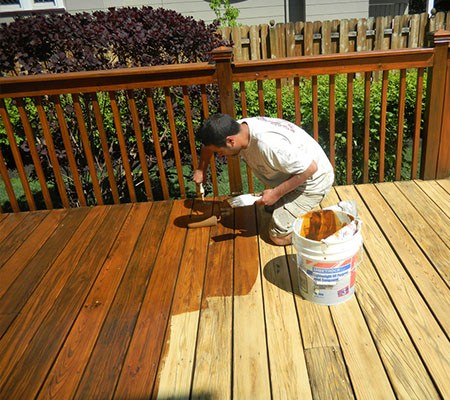Top Tips for Fence Staining and Waterproofing
Fence staining is one of those home maintenance tasks that nobody enjoys but everyone likes the end result. It’s dirty, smelly, messy and time consuming, but it can be so worth it!

Do your fence staining right and you’ll only have to do it every few years. That’s what we’re going to help with today.
We’re going to share some of our fence staining experience to help you save time, energy and effort the next time you need to do yours.
PSE
Our #1 tip for fence staining is PSE, Pay Someone Else. It’s a terrible job. It takes time, is backbreaking, dirty, smelly and takes far longer than it should.
If you do decide to continue doing it yourself, try these other tips.
Preparation is everything
As with any home improvement task, preparation is key. The better you prepare your workspace, the better the end result should be.
In the case of fence staining, that means brushing the fence down to remove loose dirt, debris, spider webs, trash, twigs and all the other stuff that sticks to our fences.
If you have a strong enough fence, you can use a pressure washer. If you have an older, less sturdy fence, we recommend a garden hose to rinse it down.
Then allow the fence to dry thoroughly before staining.
Use a good quality stain
You can use the cheap stuff from Home Depot or Lowe’s, or spend a little more on a branded product. We recommend the latter.
Many branded products use better quality ingredients and give a much higher quality finish. Some will smell less and be easier to apply too.
Choose your stain carefully to make sure it is true to color, includes waterproofing and has as little environmental impact as possible.
Use a good quality brush
It may seem like a waste to use a good brush when you’ll not be able to use it again, but it’s an investment.
A good brush should be easier to use, faster to apply the stain and can help apply the stain much more evenly.
If a good brush means not having to stain the fence a second time, we would call that a sound investment!
Keep children and pets indoors
If you have children or animals, make sure they cannot get into the garden while you’re staining your fence or while the fence is drying.
We speak from experience that the last thing you want is a child with brown hands because they wanted to feel your new fence or a white dog with a brown tail that got too close.
Close the doggie door, lock the yard door and keep everyone away while you’re working.
Plan for two coats
Even if your wood stain of choice is a single coat stain, plan for two coats. There will always be areas that need more and planning for that means you don’t be disappointed when you have to gear up again.
You may be able to get away with patching the areas that need a second coat, or you may not. You may be able to just stain that single piece of wood or fence panel, or not.
Plan to have to stain the entire fence again and you’ll be pleased when you only have to do a little.
Use a ground cloth
Our final piece of advice for fence staining is to use a ground cloth on areas that will stain.
You can turn over a flower bed and stained lawn will regrow. Getting stain on a patio, driveway or deck on the other hand…
Use a ground cloth when you’re staining above anywhere that will hold and keep the stain for a much better result all around!

